Early on in my chair seat weaving career many, many moons ago, I was told by some old-timers that when you weave a twill design or herringbone design seat, the slant should always be from the upper left to the lower right.
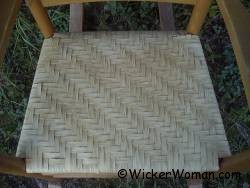
What’s Your Slant with Splints, Reed, Hickory, Cane or Shaker Tape?
Seemed reasonable and logical and looked pleasing to me so that’s the way I’ve always done the twill or herringbone design weaving and it’s the way most instruction books say to weave them, also.
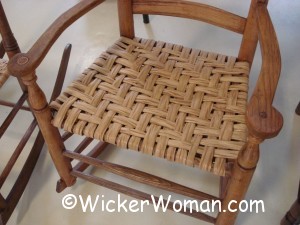
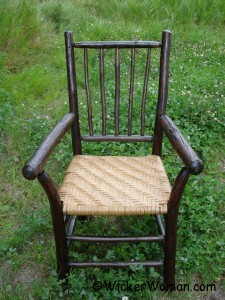
(PS-I didn’t weave the hickory bark chair seat above on the right, only took the picture. My good friend and Vice President of The SeatWeavers’ Guild, Inc., at the time, David W. Dick did the weaving.)
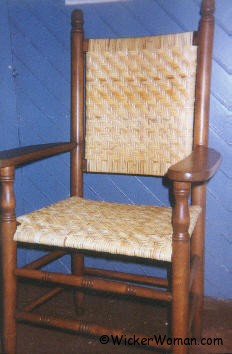
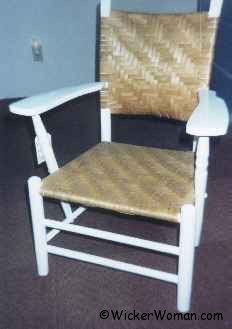
Then of course, if you weave the design in the seat going from upper left to lower right, you MUST continue that same pattern direction on the back of the chair, as in the two examples shown above.
Heaven forbid the weaver with the slants going in one direction on the seat and the slant on the back going in the other!
It just looks plain weird and unprofessional in my opinion. So, if you are the weaver, make sure the designs are going in the same direction on the seat as well as on the back!
Unless you are weaving that way on purpose and maybe accenting with different colored materials or something similar, folks like me will think you just made a mistake.
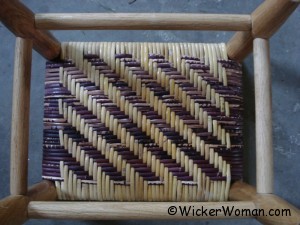
So, what’s your slant with splints, reed, hickory bark, cane or Shaker tape? Do you agree or disagree? Tell us your story or just leave a comment.

What are your thoughts about this blog post?
Leave your comments below and share with your social networks!
~~Live Well, Laugh Often, Love Much ~~
Happy Weaving, until next time!





how do you finish reed seats………..i stain them and then shellac to finish……….i’m looking for the most long lasting finish,….we have tried not shellacking them , just stain…………..what do you do?
Ioanna,
I too, use shellac on the rattan reed seats after I stain them. I have also used Danish oil and like that finish treatment, as it seems to penetrate the reed rather than sitting on the surface. Whatever you use for the final finish though, it tends to dry it out and can make the reed crack on the edges where it goes around the rungs, especially.
Putting padding of some sort, like thick upholstery foam, inside the pocket really does protect the seat and keep it from sagging and helps to prevent cracking. If the chair or rocker will be outside on a porch, then I’ve even used ridged foam insulation instead of the soft foam in the seat. I’ve found that the ridged foam is less likely to absorb moisture, like rain, than the soft upholstery foam.
Hope this helps!
Caning is rough when handled. Can I use fine grit sandpaper to remove little pieces of raised caning?
Hi there Jennifer,
Sorry to hear the cane is rough, but are you sure that it’s cane and not reed you are talking about? Usually, cane (the outside skin or bark of rattan) has a very smooth, glossy finish and is hardly ever rough, that’s why I’m asking to make sure we are talking about the same materials.
It is possible for the flat reed (the inner pith of rattan) to be a bit hairy, depending on the quality, but here again, not usually rough unless you accidentally have the wrong-side-up. But in a general answer to your question, yes, you can use fine-grade sandpaper to smooth out the rough spots.
Take a look at this page, which might help you determine for sure what material you are talking about. What are Chair Cane and Rattan Reed?
Ohh my goodness, Cathryn ! My weave goes the opposite way !
But I DO match the direction for seat and back.
Wonder if there is a reason for the direction, as I would change mine, if so !
Do any of the basket weavers know why ?
Thanks, Cathryn !